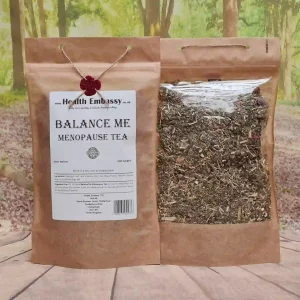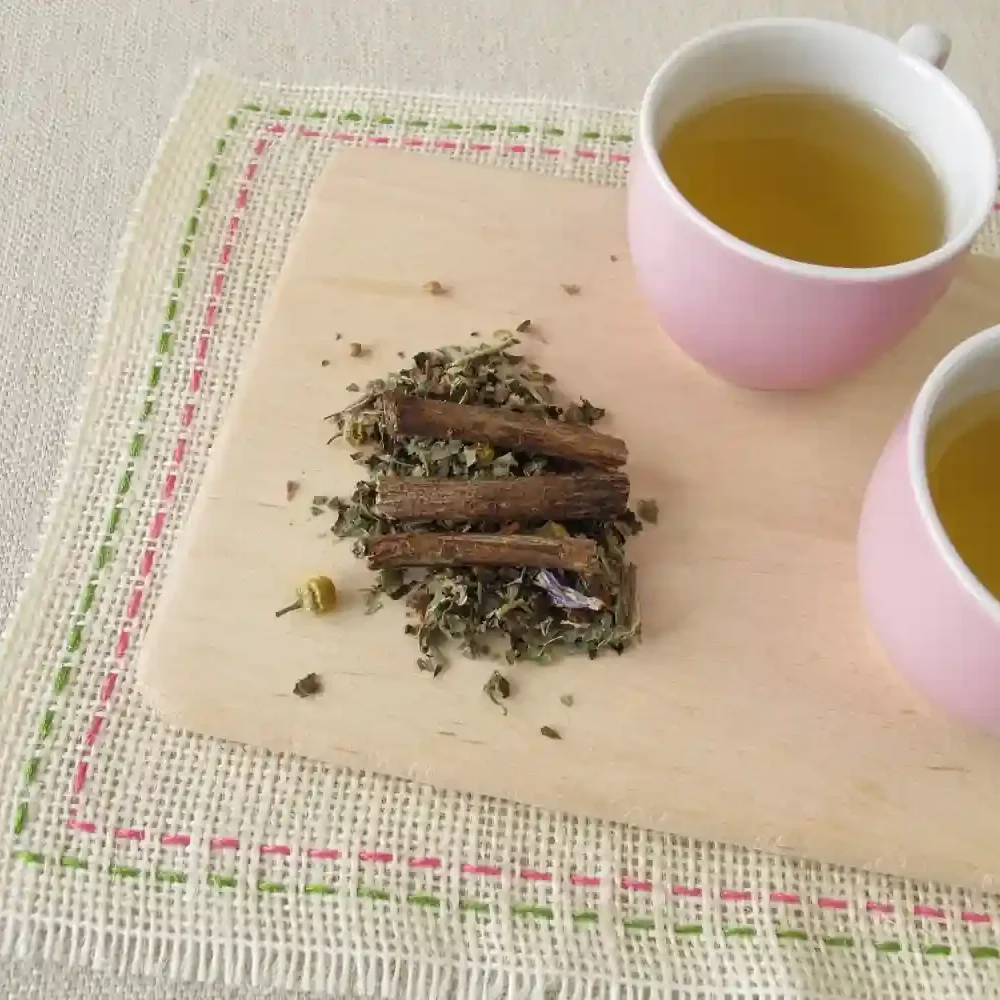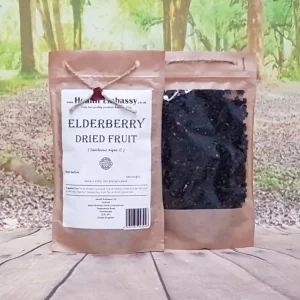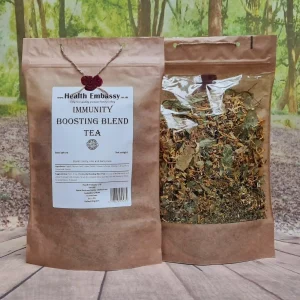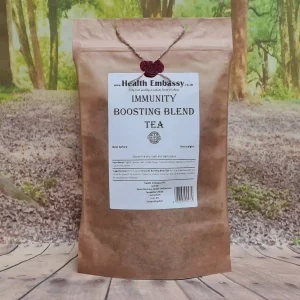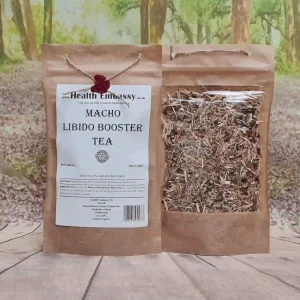No products in the basket.
Rosehip Peel (Rosa canina L.)
£9.99
Rosehip Peel from Health Embassy is a carefully hand-packed dried botanical known for its bright, natural flavor and vibrant color. Ideal for herbal teas and blends, it adds a refreshing fruity note and enhances the visual appeal of any infusion. Perfect for creating flavorful, aromatic beverages.
Description
Rosehip Peel from Health Embassy is a dried, hand-packed botanical product made from the outer skin of the fruit of the wild rose (Rosa canina). Valued for its vivid reddish-orange colour and mildly tangy, fruity flavour, it has been used for centuries in traditional European and Asian practices. Carefully prepared to maintain its natural properties, this peel is ideal for creating infusions, blends, culinary recipes, and craft applications.
Naturally GMO-free and without artificial additives, this product reflects Health Embassy’s dedication to quality and authenticity. With its pleasant aroma and vibrant colour, Rosehip Peel offers a versatile ingredient to those who appreciate the richness of time-honoured herbal traditions.
Botanical Background and Traditional Uses
Rosehip, the fruit that develops after the wild rose has bloomed, has long been recognised as a prized botanical in both folk customs and household use. The peel — which comprises the outer layer of the fruit — is particularly useful for its ability to infuse liquids with colour, flavour, and subtle fragrance. It has historically been used in herbal teas, tinctures, and cooking, as well as in decorative and craft preparations.
Rosehip Peels were especially popular in Central and Eastern Europe, where they were often added to blends intended for long winter months. In rural households, the peels were gathered and dried to preserve them for future use, commonly combined with herbs like hibiscus, mint, or linden. Their pleasantly sour flavour brought brightness to both beverages and preserves.
Suggested Preparation Methods
Infusion
One of the most common and simple ways to use dried Rosehip Peel is as a hot infusion.
Add 1 to 2 teaspoons of dried Rosehip Peel per 250 ml of hot water (approx. 90–95°C).
Let steep for 5 to 15 minutes, depending on desired strength.
Strain and enjoy as a warming herbal tea with a tart, fruity character.
Optional: Sweeten with honey or blend with other herbs for added complexity.
This method is suitable for enjoying the natural flavour of the peel on its own or as part of a custom tea blend.
Cold Brew
For a milder, refreshing option, Rosehip Peel can be brewed cold.
Use the same ratio as for hot infusion (1–2 tsp per 250 ml).
Add to cold, filtered water and refrigerate for at least 6–8 hours.
Strain before serving. This cold brew can be enjoyed as is or with a splash of citrus juice.
This gentle method highlights the peel’s subtle fruitiness and is ideal for warmer months.
Decoction
For a fuller flavour extraction, especially when combining with harder herbs, the decoction method is preferred.
Add 1 tablespoon of peel to 300 ml of cold water in a pot.
Bring to a low boil, then reduce heat and simmer gently for 15–20 minutes.
Strain and serve.
Pairing Suggestions for Herbal Blends
Rosehip Peel’s sour and fruity tone makes it a valuable blending component. It can add brightness and visual appeal to a wide range of herbal infusions.
Recommended Herbal Companions:
Hibiscus Flower: When combined with Rosehip Peel, Hibiscus Flower intensifies the infusion’s rich red colour while contributing a bold tartness that harmonises beautifully with the natural fruitiness of the peel. This pairing results in a vibrant, refreshing beverage with a
- Linden Flower: With its naturally sweet, honey-like undertones, Linden Flower brings warmth and roundness to the infusion. Paired with the tart Rosehip Peel, it creates a gentle and harmonious blend that is smooth on the palate and subtly fragrant, making it suitable for both hot and cold preparations.
Elderflower: Known for its soft floral fragrance and faint musky sweetness, Elderflower adds aromatic complexity to the blend. When paired with dried peel, it enhances both the bouquet and the taste, resulting in a refined, layered infusion that delights the senses with its balanced character.
Blending Tip: For optimal flavour and aromatic balance, use approximately equal parts — about 1 teaspoon each — of Rosehip Peel and the herb of your choice. Add the mixture to freshly boiled water and steep for 8 to 12 minutes, adjusting the time to suit your preferred strength. This simple method allows each botanical to release its full profile, creating a harmonious and satisfying herbal infusion.
Culinary and Decorative Uses
In addition to herbal teas, dried Rosehip Peel can be incorporated into:
Homemade syrups or jellies: For added colour and tang.
Mulling spices: As a fruity complement to cloves, cinnamon, and orange peel.
Bath blends: When combined with rose petals or lavender for colour and gentle fragrance (patch testing is recommended for skin sensitivity).
Potpourri and sachets: Adds natural reddish colour and a hint of tart aroma.
Its versatile nature makes it a favoured ingredient for those crafting homemade gifts, skin-friendly bath infusions, or traditional food preparations.
Product Quality and Commitment
Wild-collected from naturally growing Rosa canina plants.
Hand-packed to preserve colour, aroma, and freshness.
Free from additives, preservatives, and GMOs.
Naturally air-dried and cut for ease of use.
Learn More
The use of Rosa canina peels spans centuries of herbal tradition, particularly in European and Middle Eastern cultures. It often appeared in seasonal infusions and was valued for its colour, longevity, and flavour. To explore deeper botanical history or expand your understanding of traditional uses, we recommend consulting ethnobotanical texts, historical herbal compendiums, or reliable online sources.
Disclaimer
This product description is provided for informational purposes only and is not intended to diagnose, treat, or replace professional medical advice. If you are pregnant, nursing, taking medication, or have any health condition, consult a qualified healthcare provider before using herbal products.

